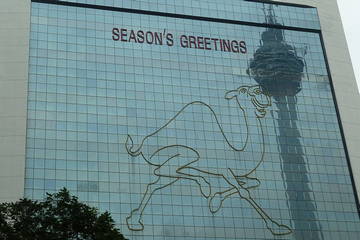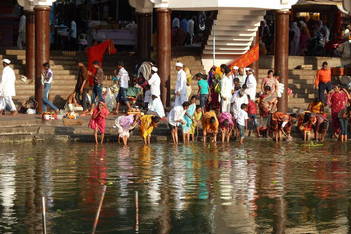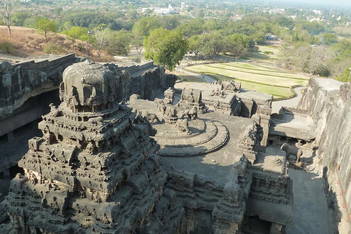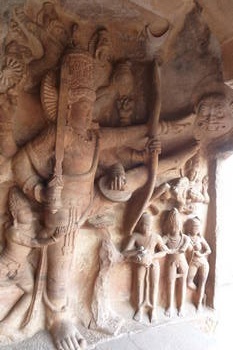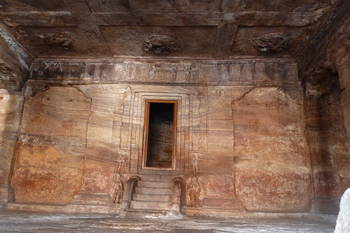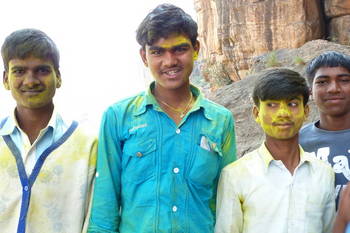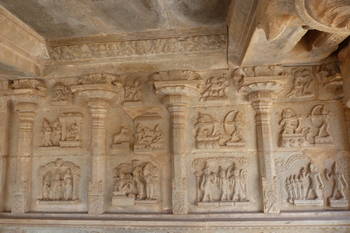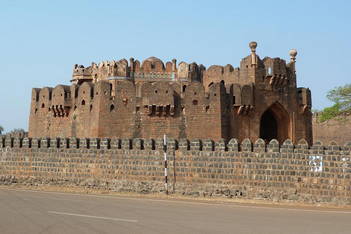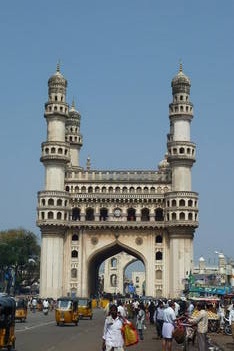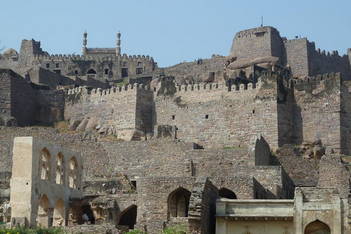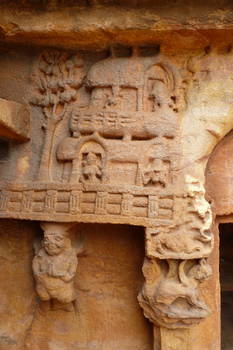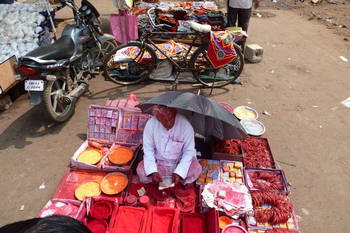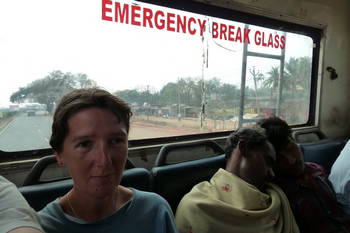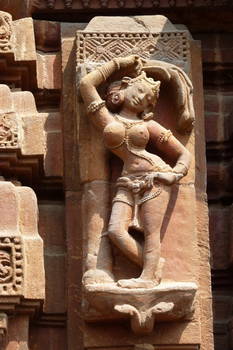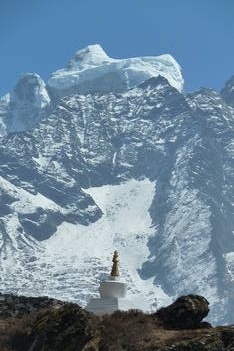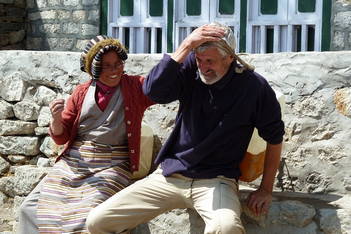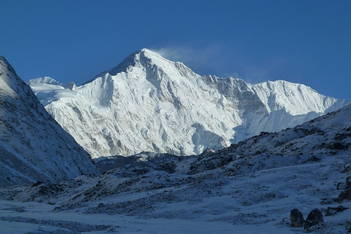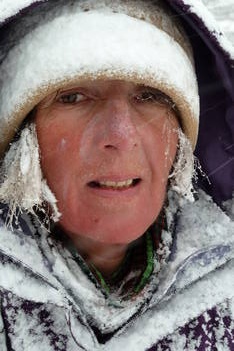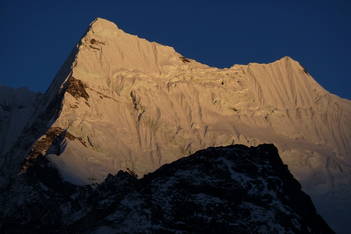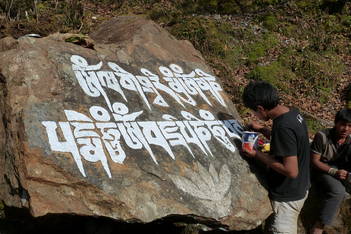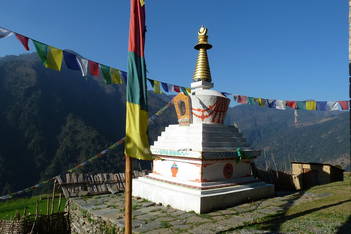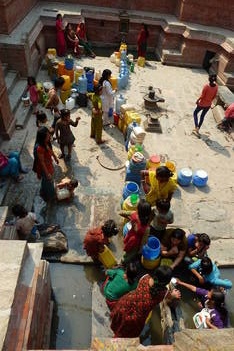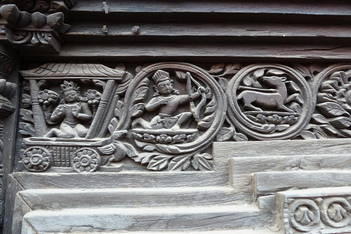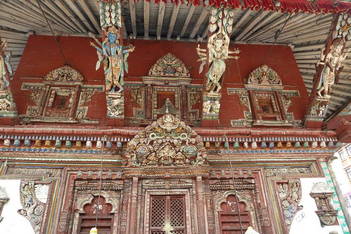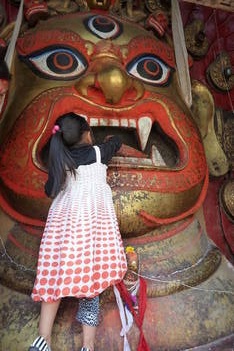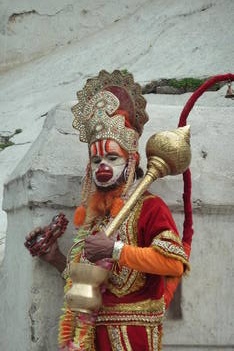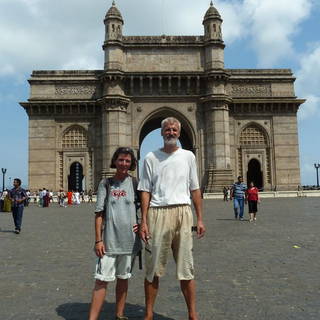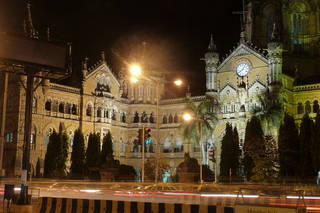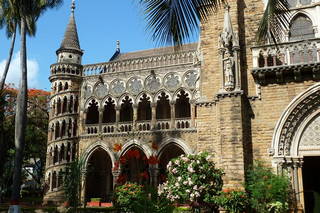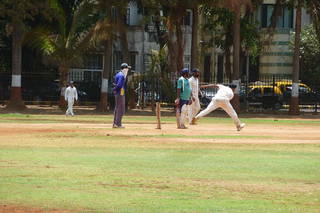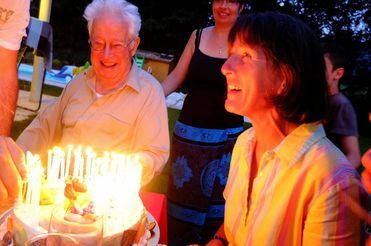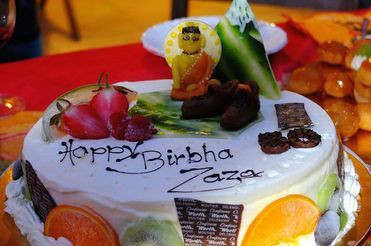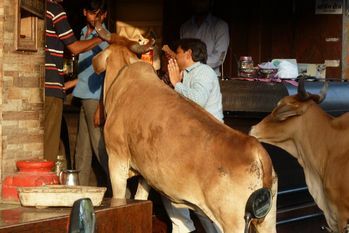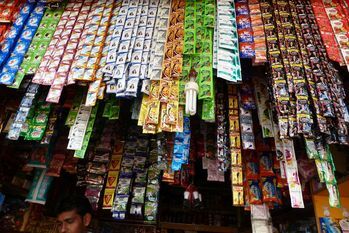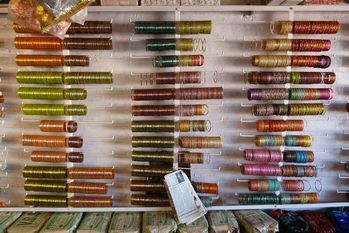Email Updates English
Following is the full text of all English email updates we sent during this trip. The texts are original copies, shown here as sent: typos, errors, warts and all (the same in French).
We've also included the pictures attached to the mails. Clicking a thumbnail will open a bigger version and use the left and right cursor keys to navigate from one picture to the other.
- Mail from 24 Dec 2012: Xmas, India etc.
- Mail from 23 Jan 2013: Nasik, Aurangabad
- Mail from 04 Feb 2013: Bijapur, Badami, Hampi
- Mail from 10 Feb 2013: Pics for Badami and Hampi
- Mail from 15 Feb 2013: Bidar, Hyderabad, Vizag
- Mail from 21 Feb 2013: Bhubaneswar, Puri
- Mail from 01 Mar 2013: Bodhgaya, Patna, KTM
- Mail from 12 Mar 2013: Jiri to Namche Bazar
- Mail from 26 Mar 2013: Back to Namche
- Mail from 09 Apr 2013: Janakpur
- Mail from 13 Apr 2013: KTM, photos
- Mail from 22 Apr 2013: KTM, Pokhara
- Mail from 06 May 2013: Tansen, Lumbini, Gorakhpur, Varanasi
- Mail from 21 May 2013: Allahabad, Lucknow, Bhopal, Mandu
- Mail from 17 Jun 2013: Melting in Mumbai
- Mail from 09 Aug 2013: Some thoughts about this year's trip to India, Part 1
- Mail from 16 Aug 2013: More about India... the final bit!
Subject: Xmas, India etc.
Date: Mon, 24 Dec 2012 11:21:23 +0000
Dear all, first of all (and just about in time!) we wish you a Happy Christmas and a Great New Year, happiness and, above all, health, wherever you happen to be! (This year's SeasonsGreetings pic comes from Kuala Lumpur.) Second, we are preparing another trip eastwards. Mid of January, we'll fly to Mumbai and then travel around middle India through loads of places we've not yet seen, like Hyderabad, Hampi and Orissa. Then, end of February, we head up to Nepal. We'll do a long trek (you knew this was coming, didn't you?), probably through the Everest region and then on to Makalu Base Camp (this part will be a new experience for us). After that, we'll slowly trundle back to Mumbai, via Allahabad, Bhopal and Indore. And end of May we should be back in good old Blighty. As usual, we will send travel emails to our two mailing lists (English and French). These lists keep growing, so if you'd rather be taken off, please do us a favour and drop us a quick note, preferably before we leave. Instead of telling you exactly where we intend to go, we refer you to the very thorough travel itinerary Vero has prepared: https://trvl2.com/=ni13a This is an extensive Google Map with all the places we'll see and lots of background information (again, in English and French), including links to many interesting websites. Vero has spent weeks doing this map... but then again, she really enjoys doing that sort of thing! On our website there are also already a few bits and pieces re this trip (codenamed "Nindia13", by the way). There's some background about our travel budget, again mostly done by Vero (she just can't leave an Excel spreadsheet alone...!) and some information about planning the trip. We'll put on some further pages about this-n-that during the next weeks. There will also be another mail, very shortly before we leave. Last but not least, here's a an absolutely amazing webpage for those of you who'd love to see Mt Everest in all its glory but just can't make it to Nepal and up to Kala Patar. This is a giant zoomable picture of Mt Everest (shameless plug: you have seen our own collection of Nepal panorama pages on https://trvl2.com/Nepal10/photos/Panoramas_2010 , have you?). This image has four billion pixels (!), was created from 477 separate photos and, to quote the site, "lets you zoom in as if you were actually there on the mountain". Well, having been there already a few times, we can vouch for that description: the effect, especially on a bigger screen, is dazzling. This page is really the closest you can get to Everest short of sweating up the hills yourself. The tent city of EBC (Everest Base Camp) is clearly visible, as is the fearsome ice fall and the route up to the South Col. Not to talk about the summit itself! Plus there are many climbers trekking up the mountain hidden in that image, searching for them is great fun as well! The page has even more: there are many other interesting images and links about Mt Everest, so please have a look! Highly recommended: https://www.dailymail.co.uk/sciencetech/article-2250676/Mount-Everest-The-incredible-interactive-BILLION-pixel-image-created-David-Breashears.html (If this link is broken by your email client, simply click this shortcut: https://trvl2.com/=mtev4b .) Well, that's it for the time being. We'd be very happy to hear from you, what you've been up to during 2012, what's on the cards for 2013... so please drop us a quick note if you find some time! Again, Happy Xmas and a Happy 2013! Thomas + Vero PS: If you like surprises, open a big browser window and click here: https://trvl2.com/=wbynight That's another amazing interactive site well worth some investigating!
Subject: Nasik, Aurangabad
Date: Wed, 23 Jan 2013 11:25:37 +0530
Dear friends, we are now in Aurangabad since last Saturday, after having spent three days in Nasik. Both cities are quintessentially Indian, but where Nasik is pleasantly so, Aurangabad is a rather unpleasant place: dirty, dusty, incredibly noisy and polluted, an urban desert. Nasik is a pilgrims' city, with ceremonial bathing ghats (ghats are the banks of rivers or lakes, used for washing, bathing and sometimes cremating people). The city was interesting, with something to see all the time: the holy ghats (see Pic 1), the markets, the many temples and old shops, the ancient city with its brick houses (which reminded us a little of Kathmandu). And the people were very friendly to boot. Altogether a very nice introduction to India. In Aurangabad itself there is not much too see: a Jama Masjid, the tomb of the queen of Aurangzeb (after whom the city is named), a few dusty city gates. The main reason to come here are the man-made caves of Ellora and Ajanta (both World Heritage Sites). Both are worth a trip though we preferred the monumental size of Ellora. There are 34 caves there, all cut into the bare basaltic rock. The whole is not dissimilar to, say, Petra (Jordan) but the latter is a whole town, whereas Ellora was just a collection of Buddhist (12), Hindu (17) and Jain (5) monasteries and chapels. However, the scale of the biggest temple, Kailash, is really out of this world and nothing in Petra even remotely compares to it. Imagine a large wall of rock and then mark a space of 50 by 33 by 30 metres. This space will be the new temple and everything has to be carved out of this immense block. Add to this that the carving is extremely ornate, that the temple has big halls with many sidechambers and chapels and you begin to realise that you are looking at a wonder of the world (see Pic 2). We were flabbergasted! The other temples are smaller but many show similar craftmanship and we spent a whole day exploring the caves and the surrounding landscape. Ajanta, by contrast, is on a much smaller scale. It boasts 26 caves, all Buddhist and all man-made, but none is nearly as vast as the Kailash temple. Ajanta has some nice carvings of Buddhas in all possible positions, but the main highlight here are the wall paintings. Alas, because they are so fragile the lighting is rather subdued and one can't get near them anyway. So while they are clearly very impressive, we were still left with a certain sense of disappointment. The paintings are marvellous but one can't really see (and appreciate) them. In fact, you will probably find better representations on the internet than what we saw in situ! There are a few sites linked on our travel map. This night, we will board a decrepit MSRTC (Maharashtra State Road Transport Co) bus which should bring us to Bijapur. We are looking forward to this trip with a certain apprehension... it will probably be one of those epic journeys which are much better in the recounting than in reality:-) Weatherwise, foodwise etc. all is well. We have seen, on BBC World, that Western Europe is under snow and also that there are huge problems at Heathrow. It seems we made our escape in time! Next mail will come in eight days or so, probably from Hampi. Till then, take care! Thomas + Vero -- Follow us on ~ Suivez nous sur https://trvl2.com/=ni13a
Click on a picture to view the whole gallery of pictures attached to the mails and navigate from one picture to the other using the left and right cursor keys
Subject: Bijapur, Badami, Hampi
Date: Mon, 4 Feb 2013 14:25:05 +0530
Dear friends, we are now in Bidar in the state of Karnataka, after our second night bus ride, this a really horrible one: noisy, dusty and totally bumpy (roads are in really bad shape in rural India, 2013 notwithstanding). By comparison, the first night bus ride from Aurangabad to Bijapur was relatively better where we could actually get some sleep! Ok, back to the sights. Bijapur is a very nice, if somewhat scruffy, town. It used to be the capital of a Muslim kingdom around 1500 to 1600 and that shows: there are a few fine mosques and quite a collection of tombs, the two biggest ones being the Ibrahim Rauza with its many minarets (which apparently inspired the Taj Mahal) and the Gol Gumbaz with the second largest dome in the world (unsupported by pillars). Both are quite some sight, though the Ibrahim Rauza is much finer and has much more sculptural detail. However, the Gol Gumbaz dome has a "Whispering Gallery", where the sound of a whisper is transported across the whole dome to the other side (around 40 metres!) and there can be heard. Well, in theory at least... in practice, the Indians in the Gallery shout and wail and scream at such a level that it's deafening... perhaps there's no word for "whispering" in Hindi? Bijapur was also nice as a town, not much traffic, loads of small monuments, mosques and interesting nooks and crannies. After Nasik another highlight. Next was small Badami, more a village than a town. In the train we took to Badami we learned that there's a huge festival going on, with about 1 lakh (100,000) people expected. We already saw our chances to find a hotel room vanishing... all the more as the train started to fill in a crazy way that is only possible in India. When we arrived in Badami, complete bedlam broke out. However, to our surprise we learned that there were rooms available... overpriced of course but still available. It turned out that the pilgrims almost all sleep at or near the temple where the festival is held... quite a melee! Badami's main sight are the four man-made caves. These are very finely carved with utterly amazing sculptures (we'd like to include a pic but the internet cafe allows no USB; please check the links in our Google map, link at the end). The caves compare very well with the caves in Ellora and they have another fascinating feature which reminded us of Petra: the sandstone shows the most incredibly coloured erosion patterns, not quite as varied as in Petra, but still highly impressive. There are also many small, deep gorges (very much like the famous Siq in Petra). An enchanting place to wander around. The pilgrims were always easy to spot: they all had yellow or red powder liberally sprinkled all over the face and hair (from the puja ceremony) and they were also quite cheerful. We also did a day trip to a place called Aihole, which is famous for its 6th to 10th century Hindu temples. These are among the first temples to be built and not carved into bare rock and they allow to follow the development of the various temples styles in quite some detail. Again, some very fine sculpture at hand. Then we took a day bus to Hampi, THE traveller centre in central India (mostly overflow from the Goa scene). We expected many Westerners (so far we hadn't seen more than 20) but the reality was, as so often, even starker: Hampi, the "village" is a travellers' ghetto par excellence, full of ancient, middle-aged and young hippies. It was a real shock. (Indians stay in 15km distant Hospet with its better facilities and do a daytrip.) Nevertheless, we stayed for 4 days... because of the utterly amazing ruins of the empire of Vijayanagar (a World Heritage Site dating from around 1400 to 1650). The core zone is slightly bigger than 2x2 miles (3.5x3.5km) and it is covered by mounds of huge brown-pink boulders (Hampi being the bouldering capital of India) and the ruins of the city itself. The temples, bazaars, bathes, palaces etc. are stunning: though the site is much smaller than the whole of Angkor, the amount of sculpture here easily outdoes all of Angkor's temples combined. And much of the sculpture, mostly hard granite, is well preserved and of outstanding quality and fineness. We strolled left, right, up and down for the whole four days and it was really worth it. The blight that is Hampi village was almost forgotten:-) Well, and yesterday eve we took that famous night bus from Hampi to Bidar (another ex-muslim stronghold), where we are now, slightly worse for wear. The joys of travelling... A general remark about the people here in central/southern India: they are way more friendly and welcoming than those in the north. This has probably to do with the fact that there are not so many tourists around (disregarding Hampi, of course). They are also quite curious and always ready to ask some questions and enter a conversation. Another thing is that, compared to 2009, there are way more Indian tourists around, all with smartphones, Samsung being king (we estimate that 99.2357% of all Indians have a better mobile than the Alcatel clunker we have). And many of these Indians come from rural locations and are totally keen to take a picture of Western tourists, complete with grandparents, in-laws, kids and the occasional cow in the background! It is not at all unusual to get a dozen requests per hour and we have now taken to grant them only when we are resting, otherwise we would never get to see all the sights! Otherwise all is well, weather is nice and hot by day, cool by night. We are in quite good shape and so far, no problems! Next mail will come in about ten days, perhaps from Visakhapatnam. All the best Thomas + Vero -- Follow us on ~ Suivez nous sur https://trvl2.com/=ni13a
Subject: Pics for Badami and Hampi
Date: Sun, 10 Feb 2013 11:14:43 +0530
Hi folks, a quick mail to deliver some pictures we couldn't upload last time. No 1 is a sculpture from one of the caves in Badami showing Trivikrama, a incarnation of Vishnu, fighting a demon (the demon's face is to the right, above the door). No 2 shows the inside of a Badami cave with many fine carvings (perhaps the resolution is not good enough). Note the erosion patterns on the wall. No 3 shows a few happy pilgrims with yellow powder liberally sprinkled over face and clothing. No 4, finally, is from Hampi. It shows a wall in the Hazara Ramachandra temple with very detailed sculptures. Note the guys aiming at each other with bow and arrow and the wheeled war chariots. You may have wondered as to why we couldn't upload pics from an Internet cafe in a country supposedly so much on the IT and Internet frontier. Well, things as they are in the hitech towers of Bangalore or Hyderabad (where we are currently) and things on the street are most emphatically not the same. "Normal" India is far more backwards than the exuberant articles and shiny features in Western media about its IT industry make you believe. In many smaller towns we (and worse, the inhabitants) regularly experience many lengthy power cuts (sometimes up to six hours (!) per day, for instance in Bidar, where we had two during our internet work). Also, wifi in cafes (of course, we're not talking about the latest hypertrendy Mumbai cafes here) or in cheaper hotels is practically unheard of. By contrast, in Thailand and even Cambodia, even most budget hotels (80%+) have a router with wifi these days and other premises offer wifi similar as in the west. Not to talk about the crappy keyboards, not working mice and other things you'd normally not even think about. Anyway, more about Bidar, Hyderabad and Vizag will follow in the next mail, due in four or five days. All the best Thomas + Vero -- Follow us on ~ Suivez nous sur https://trvl2.com/=ni13a
Subject: Bidar, Hyderabad, Vizag
Date: Fri, 15 Feb 2013 13:58:15 +0530
Dear friends, it's our last day in Vizag (short for Visakhapatnam); we'll take the night train to Bhubaneshwar later. Back to Bidar. This is a small, enjoyable town in northeast Karnataka with a big fort, mostly in ruins but, as these Indian forts go, still very worthwhile to explore. The imposing entrance gate (see pic 1) still shows traces of the original colourful tiles. The fort is vast and some palaces are still in relatively good shape with nice carved wooden ceilings and mother-of-pearl inlays around the doors. The two other big sights in Bidar are the tombs of two ruling Muslim dynasties (15th to 17th), one less impressive group west of town, another with 8 big onion-style domes, to the east. The eastern group was very good, not least because of the very well-executed interiors. Next was Hyderabad, a huge city with 5.5m inhabitants. Sadly, we didn't like this city, as it is, like Aurangabad, dusty, dirty (some parts seriously so), noisy and incredibly polluted. Anyone who has read Dalrymple's White Mughals about J A Kirkpatrick (highly recommended) will appreciate our disappointment: this book was one reason why Hyd jumped into our itinerary. There are some sights, the famed Char Minar (see pic 2), the Chowmallah palace, and of course Golconda fort (pic 3), but on the whole we were quite disappointed. The saving grace was that we could, after some searching, locate Kirkpatrick's old Residency. Poignantly, this was in a sense the greatest disappointment of all: a grand old building in the grounds of a Girls' school, unused today, still with its big Durbar Hall and its great chandeliers, large mirrors and painted ceiling; the grand staircase; the plastered ceilings... all covered with dust and a layer of bird excrement and feathers. The building (still with the Royal Coat of Arms outside: Honi soit qui mal y pense....) is slowly crumbling and going to ruin. From Hyd, we took a night train to Vizag, an enjoyable coastal town with a few beaches and not much else. We spent 3 days here, two on and around the beaches (watching locals bathing (or trying to...) is great fun indeed) and the ports (commercial and fishing) and one day with an excursion up Araku valley, into the Eastern Ghats, a mountainous region around Vizag. This could have been a great outing but the train (5 hours up) and bus (4 hours down) were so slow and overcrowded that we didn't enjoy the scenery much. Still, some very nice views and all in all, not too bad: at least an unforgettable experience:-) Healthwise, all is OK with the exception of Thomas' left foot. He bought some new sandals in Bidar and, as usual, got some blisters. Normally these disappear within a few days and all is fine. However, this time, don't know why, two transformed themselves into a bloody wonderful mess. Plus there must have been some further infection because Thomas came down with a fever and utterly incredible whole-body joint/muscle aches (even moving the little finger hurt, no kidding). The fever and the aches are gone now though the joints are still swollen. The blisters though are still there and currently Thomas' left foot is no high altitude trekking material. We shall see... Next mail will probably come from Bodhgaya, where the Buddha achieved enlightenment (perhaps the vibes are good for blisters...?) All the best Thomas and Vero -- Follow us on ~ Suivez nous sur https://trvl2.com/=ni13a
Subject: Bhubaneswar, Puri
Date: Thu, 21 Feb 2013 18:15:23 +0530
Dear friends, we are now in Bhubaneswar, in the state of Orissa. The plan was to stay here for five days, visit old Bhubaneswar and its famous temples, the man-made Jain caves in the vicinity, the town of Puri and the huge temple of Konark, a World Heritage Site. Alas, during yesterday and today, there was a nationwide strike, with all public transport except trains ceasing, and so we were stuck here in Bhubaneswar for full two days. (The sight of a broad Indian street without almost any traffic, no fumes and no honking is eerie: something feels very wrong but also very enjoyable.) So, we have seen every single temple here, we've done Puri and also the caves, but unfortunately, we have not seen the main highlight planned for yesterday: Konark's sun temple. Well, that's life, perhaps next time round. This evening we (have to) take a night train to Gaya/Bodhgaya (that's one of the problems with these trains: you have to book them weeks or even months in advance and you can't move the reservation). Bhubaneswar is two towns: the new, typically graceless Indian town, and to the south, old Bhubaneswar with its dozens of temples around an ancient man-made lake. These temples are quite impressive, finely sculpted (see pic 4) and in the typical Orissan style. In a sense, they are well-preserved miniatures of the giant Sun temple in Konark... so we can console ourselves with the fact that we have seen all the architecture if not the temple itself. The Jain caves, 6 km to the west, were cut from sandstone in the 1st century BC (!). Given that age, they are simply amazing. Some carvings are almost as fresh as if done yesterday (see pic 1). Puri is a strange town: on the one hand it has the most important Jagannath (Lord of the Universe, a Vishnu incarnation) temple in the country, a great pilgrimage site (see pic 2, showing a seller of puja powder); on the other it's a famed beach resort. We had high hopes for this strange combination but we found the place a bit disappointing. First, the temple is for Hindus only. Second, the town is quite dirty and smelly (think many, many cows and even more cowpats, even on and near the beaches). Finally, the beaches are in no way as good as those in Vizag, the last town we came from. They are shadeless, with run-down or even derelict hotels along the sea front and not at all inviting. In fact we found the idea that someone would use Puri as a holiday base rather strange. But apparently, West Bengalese, especially Kolkatans, do so in their thousands... Well, that was Bhubaneswar. Here's another remark about Hyderabad: during Friday prayers the Muslim quarter was turned into a virtual battle zone, with hundreds of riot police around the Jami mosque and the Char Minar, with water and tear gas cannons and so on. The atmosphere felt a bit strange, to say the least. The Muslims seem to be rather austere and "hardnosed" in this country (we had some not very friendly encounters in some of the mosques though most Muslims on the street are friendly enough if a little more reserved than the easier-going Hindus). Though the Muslims are currently vastly outnumbered by Hindus, they "breed" much faster. The demographics will slowly change, like they did in Lebanon, and then, in some 30 or 50 years, we think, there will be trouble. Not the sort of trouble that flares up every now and then, but real trouble, fanned by irresponsible Hindu and Muslim "politicians", perhaps even along the lines of a civil war. Hopefully, there may emerge a uniting leader, someone like Gandhi, who may change this situation but given the ever more fragmenting game that is Indian politics this looks unlikely. We are okay, two blisters on Thomas' left foot are getting better. The third, alas, is more stubborn and we will have to wait and see how it all feels in Kathmandu. One thing we have learned to appreciate is the relentless fight Indian doctors have to wage against all sorts of dirt: keeping a wound clean is almost impossible here and it must be a hard job for the docs to keep up with the dirt and keep their patients infection-free. Next mail should come from Kathmandu in about a week! Almost forgot: pic 3 shows Vero in the bus to Puri, next to two drunk Indians who had a strong tendency to fall asleep on their neighbours' shoulders. All the best Thomas + Vero -- Follow us on ~ Suivez nous sur https://trvl2.com/=ni13a
Subject: Bodhgaya, Patna, KTM
Date: Fri, 1 Mar 2013 15:31:26 +0545
Dear friends, we are now in Kathmandu. All is well, even Thomas' left foot is on the mend. From Bhubaneshwar, we took the night train to Gaya and a bus to Bodhgaya, the place of the Buddha's enlightenment. We really liked this town, as it was relatively quiet and didn't havethis polluted, noisy Indian feel. There's a big, peaceful temple next to the Bodhi tree under which the Buddha meditated. And, like in Lumbini, his birthplace, there are many Buddhist monasteries around but more compact and easier to visit than in spread-out Lumbini. Three very enjoyable days in Bodhgaya. Then we took a bus to Patna, the capital of the state of Bihar, one of the poorest in India. (In the train to Gaya, we had so many beggars, even small kids... incredible. Bihar really feels poor, neglected and badly governed .) There's nothing much to see in Patna beside an old British granary, so next day we took an early bus to Raxaul, the Indian border town. The ride there was probably among the two or three worst bus rides we ever had (many years ago we had a similar one in Laos). The roads in Bihar are notoriously potholed --> very bumpy ride and for about 50 km, there was no road at all, just an ongoing road-building project --> very dusty and even more bumpy. We needed 10 hours for 200 km... even the buses in Nepal are faster. Well, then we crossed the border w/o a hitch, took a night bus to KTM (relatively OK, this one) and now we are here. It feels very quiet and "undusty" after six weeks in India... when we arrive from Europe we always think Nepal is a little dusty and noisy. Arriving from India corrects this impression:-) Even the pollution gets better every year. The municipality also has introduced new strict parking measures and fines (and, importantly, these are enforced!). This makes for a much quieter feel because the roads are less congested. We will leave for the mountains in two days' time and we think there will not be much connectivity (internet and mobile) before we reach Namche, around the 11. or 12.3. We will send another mail from there before we actually go up into the high mountains. All the best Thomas + Vero -- Follow us on ~ Suivez nous sur https://trvl2.com/=ni13a
Subject: Jiri to Namche Bazar
Date: Tue, 12 Mar 2013 14:26:57 +0545
Dear friends, we are now, after nine days of leisurely trekking, in Namche. All is well, and all of Thomas' blisters are gone. We had no problems along the trail other than the weather which has been disappointingly cold and the mule trains. Weatherwise, we even had three days of rain so far... almost unheard of for this period. At least, here in Namche it's sunny if cold. It is also rather quiet which may have to do with the relatively bad weather: bad weather always means that there are not many, if any, flights to Lukla (20 to 25 per day is normal), and so there are fewer tourist around. And it's of course early in the season. As for the mule trains (bringing up provisions like rice and gas etc), these have at least doubled in number since 2010... they now destroy the stone trails, they shit without end (parts of the trail are now a mixture of mud and mule shit) and they are a general nuisance. But other than that, the mountains are as enticing and beautiful as ever. The six weeks in India with loads of walking in the cities and around sites have prepared us well, so we are fitter than if we would have come directly from England to Nepal. For those interested here's our route so far: 1. Bus KTM to Jiri, walk to Shivalaya 2. walk to Bhandar 3. walk to Sete 4. walk to Junbesi 5. walk to Trakshindo La (horrible weather) 6. walk to Khari Khola 7. walk to Puiyan (more bad weather) 8. walk to Chaunrikharka (got soaking wet) 9. walk to Jorsalle (Mt Everest National Park Entrance) 10. walk to Namche (short day) We will now stay a couple of days in Namche and then go up to Khumjung, a rather nice and unspoilt village (unlike Namche which resembles Thamel more and more with every passing year). Next we head up the Gokyo valley, then to Chukhung and perhaps also up to Ama Dablam Base Camp. This will take around 16 or so days and we will have no net access during that time. For those who might want to reach us via mobile phone, coverage is quite patchy too, but we will check our SMS whenever we can. (Ben+Donna: Miss Smelly Fridge is still around and fighting fit. We're staying in her Sun Site lodge again. The fridge, though, is gone for good!) We will send the next mail in about two weeks, once we're back in Namche. -- Follow us on ~ Suivez nous sur https://trvl2.com/=ni13a
Subject: Back to Namche
Date: Tue, 26 Mar 2013 12:03:26 +0545
Dear friends, we are now back in Namche after 12 days in the high valleys, mostly the Gokyo and Chukhung valleys. We are fine, with a deep tan and quite a bit thinner than two weeks ago:-) During the whole of the time up there it was cold. Of course, at an altitude of 5000m it's bound to be cold at times but compared to earlier treks we found it especially cold. There was also an incredible amount of snow, of which more later. The weather, however, was the biggest drawback: normally there's the occasional day with fog or snow in the afternoon. This time round we had 4 or 5 days with mixed or even really bad weather, an unusual pattern. The only advantage of the bad weather (for us, not for other tourists!) was that many flights to Lukla were cancelled and there were and still are astonishing few tourists around. Gokyo valley was a bit of a disappointment, as we arrived with very bad weather, fog and snow which made us feel like real alpine explorers:-). The next day was much better and we did Gokyo Ri, one of the premier viewpoints in the high Khumbu. Alas, the trail up to the 4th and 5th lakes was reportedly completely snowed under (snow up to the hip and it took one guy more than 4 hours just to reach the midpoint between the 4th and 5th lake, normally an easy 2 hour stroll). So we refrained from even approaching the lakes. The path up to Renjo La was also not in good condition, so after only 2 nights (normally we spend 4 or so) we left Gokyo for the Chukhung valley. There, we again had a really bad day before a couple of good ones. We did Island Peak Base Camp and explored the Imja Glacier (there's a big GLOF there and it was pretty interesting to look at the lake from the immediate vicinity). Next day, with glorious weather, we climbed Chukhung Ri, at 5546m the highest point of this trek. For us, it was quite interesting to see the whole of the high Khumbu so snowed in, with many peaks and ridges looking completely different. However, many other tourists were bitterly disappointed, as many of the high peaks and passes (notably the Cho La) were closed or at least not without some danger. Day after tomorrow we will start the long trek down to the Arun valley. We have no idea when or where we will have internet access for the next time; perhaps in 10 days when we get to the start of the Makalu Base Camp trek. If not, it will be at least another 10 days, when we return from Makalu. For those who have to get in touch via mobile and SMS, NTC (the Nepalese carrier) is quite unreliable. Please send two or even three SMS's if it's really important. Once in Kathmandu, we will also send some photos, to give you an impression about the scenery! All the best Thomas + Vero -- Follow us on ~ Suivez nous sur https://trvl2.com/=ni13a
Subject: Janakpur
Date: Tue, 9 Apr 2013 11:47:55 +0545
Dear friends, just a quick note to tell you that we are now in Janakpur, in the eastern Terai (the lowlands). We have left the mountains yesterday, about 2 weeks earlier than planned. Unfortunately, we couldn't do the Makalu Base Camp trek, mainly because the Shipton La, a high col (around 4200m) into the Barun valley, is still closed because of the masses of snow. We had hoped that the Makalu expeditions would clear the trail in time for us, but these wimps chickened out and took the easy route: they ferried all (!) equipment with helicopters to MBC, down to the last potato. Alas, that meant that nobody would do the trailblazing work... bad luck for us and a few others who wanted to do MBC. (Even if the pass were open, we would still have had some problems, as we rely on lodges all the way to MBC. So even one location without an open lodge would have meant turn-back.) We'll spend a few days here in Janakpur, there's a big festival upcoming, before heading back to KTM. Internet (and electricity) is rather unreliable from here, so there will be a much longer message with the promised photos from KTM in about a week. We are fine (though thin and hungry after that long trek), no health or other problems. The weather here is hot and sunny, a good introduction to the even hotter climate of Uttar Pradesh in May. (Hard to believe that just 5 nights ago we were freezing in our sleeping bags...) All the best Thomas + Vero -- Follow us on ~ Suivez nous sur https://trvl2.com/=ni13a
Subject: KTM, photos
Date: Sat, 13 Apr 2013 16:09:35 +0545
Dear friends, we are now in KTM, after a few very hot and sweaty days in the Terai where temperatures reached the low to mid-40s. KTM is much cooler and breezier and though there are now loads of tourists, it's quite enjoyable. We will stay here for a good while, taking in the fine food and (re-)visiting all the temples and monasteries etc. in the Kathmandu valley, before setting out to Pokhara. A few words about the trek. As ever, despite the Makalu disappointment and the strange weather patterns, we think this will the highlight of this trip. The Khumbu is really unbeatable for mountain lovers and, believe it or not, there are always new places and new vistas to discover and to explore. We enjoyed the walk-in not as much as we did before -- mostly because of these horrible mule trains. The walk-out was again great though the first mule trains are appearing there as well:-( We think that in 10 years time, most transport in the remote regions will be done with mules. As nice as KTM is for most tourists, it always amazes us how patient the Nepalese are with their government, the electricity company, the state of the roads etc etc etc. Since the Maoist insurrection broke out in the late 90s, the country has been inexorably sliding downwards. The biggest problem is the government and the politicians: corrupt, always bickering and not the least interested in bettering the lot of their voters. If you were to design a government to torture the Nepalese you couldn't do better. Latest case in point, the election date. Since months the parties are bickering about that... result so far nil. But this works in the other direction as well: people here are so used to shrug their shoulders and grin and bear it that they perhaps deserve this political scene. Now a few words to the attached photos. 1. Kang Tega mountain, Vero's favourite peak. 2. Thomas training as a water porter for our lodge in Khumjung. The lady is the landlord, she's carrying 20 litres; Thomas is carrying 35 (and it was darned heavy). Porters routinely carry 80 to 100 kilos. 3. An early morning view of Cho Oyu and the top of the Gokyo valley. 4. Vero snowed in. 5. Chukhung ridge at sunset. 6. Rock re-painting in Puyan. Message: Peace on Earth. 7. Farewell to the Khumbu region before going down: last pic of a stupa. The next mail should come from Pokhara in some ten days or so. All the best Thomas + Vero -- Follow us on ~ Suivez nous sur https://trvl2.com/=ni13a
Subject: KTM, Pokhara
Date: Mon, 22 Apr 2013 14:15:05 +0545
Dear friends, we are now at Lakeside in Pokhara, after 8 days in KTM. And guess what... it rains. It started two days ago in KTM and now we have a solid 3-day run of rain. Early monsoon, perhaps:-) We visited so many temples in the Kathmandu valley that we started showing the first symptoms of temple lassitude but then again, where can you find such an amazing concentration of temples? (One answer may be "In Angkor Wat", but that's a different story and a different country.) We also attended the Seto Machendranath festival in KTM. This is one of the most important festivals in the valley. The God, Seto Machendranath (Seto means white), is moved in a huge and heavy wooden chariot through the streets of Old KTM which is an amazing feat given the narrowness of the alleyways. The chariot is moved by two bands of men with big ropes; they shout and sweat and stagger along, with huge crowds around them. Accidents (even deadly ones) are not rare and now we know why! We have done a few videos which we will upload once we're back in B'stoke. We also had our fill of steaks and other nice food (Thai, Middle Eastern), makes for quite a change after more than five weeks of dal bhat and boiled potatoes! The attached photos: 1. This shows people waiting for water at one of the traditional tanks. Water is scarce in the valley and as you can see there are long queues of all sorts of containers, waiting to be filled. Tourists in the hotels of course have no such problems... water there is delivered by big water trucks. Our friend Mukhiya with his Ganesh Himal hotel goes through 18,000 litres PER DAY! Saving water should be a priority also and especially in hotels but sadly it isn't, partly because tourists are left in the dark about this problem. 2. Details of a wood carving from a temple in Patan's Durbar Square. The original is about one foot big, to give you an idea of the intricacy. 3. Again Patan. The front of the Rato (Red) Machendranath temple. Note the colourful struts, all carved many centuries ago from wood. 4.The White Bhairab in KTM Durbar Square. This menacing figure is normally hidden behind a wooden screen and only shown on a very few special days in the year (in almost 20 years of visiting Nepal, we had so far not seen it!). The two Bhairabs (there's also a Black one and both are aspects of Shiva) are fearful, terrible gods who devour everything they can lay their hands on. The little girl in front, though, doesn't seem to mind:-) 5. A Hanuman in Pashupatinath. Hanuman is a famous Hindu god (see the Ramayana story for details) and this guy has put together a pretty good costume with which he even outdid the numerous saddhus who grace the Pashupatinath temple. We will spend a few days in Pokhara and will next go to Tansen, a nice and interesting town nearer to India. Afterwards, we'll visit Lumbini (Buddha's birthplace) before finally re-crossing into India. We have decided to add Varanasi to our itinerary because we have a few days to burn. That's also a good occasion to mention once again our Google map which, we are sure, you have followed religiously:-) So the next mail will come from either Gorakhpur or Varanasi. All the best Thomas + Vero -- Follow us on ~ Suivez nous sur https://trvl2.com/=ni13a
Subject: Tansen, Lumbini, Gorakhpur, Varanasi
Date: Mon, 6 May 2013 15:52:13 +0530
Dear friends, we are now in Varanasi, at the banks of the mighty Ganges. It is incredibly hot here in the plains but at least there are no mosquitoes in V. We have learned that the state of bliss for a traveller here is no heat and no mosquitoes. Hell 1st degree is heat > 40C and some wind, but no buzzies (Varanasi). Hell 2nd degree is heat > 40C and no wind, still no mosquitoes. Hell 3rd degree is no heat, but a bunch of mosquitoes. And the worst hell of all (Lumbini) is heat and a seemingly endless supply of these pesky beasts. Coming from Pokhara, we stayed three days in Tansen, did some walks and enjoyed the laid-back, untouristy atmosphere. A nice, cool place (at an altitude of 1350m) before Lumbini. Lumbini is the birthplace of the Buddha and, after Bodhgaya, the 2nd of the places we visited on the "Buddhist circuit". We had been there before, but wanted to visit all the four places in one journey. In Lumbini there are just a few ruins left but no big deal. The real attraction are the many monasteries from Buddhist countries all over the world, with their diverse architectures and styles: a real world tour of Buddhist architecture. There are many more monasteries (and bigger ones) in Lumbini than in any of the other three places. Lumbini was very hot and very humid but the real PITA were the mosquitoes (see the hells above). After 2 days, we left Lumbini (and Nepal) for Gorakhpur (and India). Gorakhpur was even hotter than Lumbini but there was a hot and dry west wind which, despite being sauna-like, makes the sweat evaporate nicely, so overall hot but bearable. Gorakhpur itself is of no great interest but there's Kushinagar in the vicinity, the place where the Buddha died (our No 3 in the circuit). This village is pretty sleepy; there are no great ruins but a very beautiful 6-m statue of a Reclining Buddha. There are also a few monasteries but by far not on the Lumbini scale. From G. we took the train to Varanasi, where we are now for four days. Here, it's again quite hot but with the Ganges there's always a breeze around, so it's not too bad. This is our 3rd visit to V. and the old city is rightly famous for its extended ghats (for bathing, washing, Hindu pilgrimage and also to burn the dead). However, we had forgotten how dirty the old city really is. We sure knew it was dirty but we were still surprised by the amount of rubbish, cow shit, mud (and more), all rolled into one smelly potpourri, enhanced by the relentless sun. Still, it's a place that has the power to move you and we rather enjoy our days here (1st time, Jan 2004, with dense fog and Delhi Belly for the two of us, we didn't like it one bit). Near V., there's also Sarnath, the 4th and last place on our Buddhist circuit. This is where the Buddha gave his first sermon, after enlightenment. It's even more sleepy than Kushinagar and there is not a great deal to see: a few ruins, a few nondescript monasteries. Still, it was nice to visit all four places during one trip. In case anyone now assumes we're Buddhists, no, we're not. There are many good ideas in Buddhism, if seen as a philosophy of life (as the Buddha intended) but there are also some things, like the karma bit and reincarnation, which we do not accept. Tomorrow, we'll bus it to Allahabad, where the recent Kumbh Mela took place. Then Lucknow and Bhopal. The next mail should arrive from there in about ten days. We are fine, the heat is not as bad as feared though we sweat profusely. The sensation that everything, literally everything, you touch is significantly warmer than you, is quite new to us and still a bit irritating. The wind is hot, the water is hot, the bedsheets and pillows are hot, Vero's daypack (pitch-black, to boot) is superhot... But it's an interesting experience and so far, we are resisting the siren songs of the AC malls, the AC restaurants or indeed the numerous AC hotels:-) All the best Thomas + Vero -- Follow us on ~ Suivez nous sur https://trvl2.com/=ni13a
Subject: Allahabad, Lucknow, Bhopal, Mandu
Date: Tue, 21 May 2013 15:25:29 +0530
Dear friends, with a delay we return to the keyboard: we changed plans in Bhopal and didn't directly go to Ujjain as previewed, instead went first to Mandu. Alas, there's no internet there so we were unable to get in touch. Anyway, from Varanasi we went to Allahabad, the scene of this year's Great Khumb Mela. We of course visited the super-holy spot where the Ganges and Yamuna meet and indeed waded to the confluence though we didn't do a full dip: doing this apparently removes the sins of a lifetime. The pilgrims around were very visibly moved and it was a rather interesting, atmospheric experience that will stay with us for a long time. Other than that there are two big houses in Allahabad, connected with the Nehru family, today two museums. In one of these houses we saw the room in which Indira Gandhi (daughter of J Nehru, 1st Prime Minister) was born. Lucknow (capital of Uttar Pradesh) was a pleasant surprise: a nice, lively old city and broad, modern avenues with many art-deco buildings and not too much traffic and noise. We visited the ruins of the British Residency (of 1857 mutiny fame where it was under siege for more than 6 months, with all British soldiers, civilians, wives and children inside). We also saw most, if not all, of the medressas, tombs, mosques etc built during the last 3-400 years. There's a distinct stylistic similarity between these buildings and the great Iranian and Central Asian mosques. Bhopal (capital of Madhya Pradesh) was also more pleasant than expected. It's a Muslim place but for a change the Muslims there were very friendly and welcoming. We also did a daytrip to the Buddhist remains in the village of Sanchi, a visit that will definitely be one of the major highlights of this trip. Very intricate sandstone sculptures around the big stupas, especially when one remembers that the place is more than 2000 years old! Mandu has many ruins (15 to 16th century) extending over a vast rocky plateau with splendid views all round. There are royal palaces (from the Sultans of Mandu), mosques, temples, tombs, towers, water tanks... enough to keep us busy for a full three days. Mandu would also be a great destination for some serious walks, but with the searing heat we didn't manage to do more than 12 or 15km per day. By the way, Mandu is also one of the very few places in India where the baobab tree grows. Amazing trees and we tried the white seeds (in hard green shells) which are a local specialty: a bit sour but nothing to write home about. Well, and now we've just arrived in Indore; tomorrow we will go to Ujjain. It is very hot again, after a cooler interlude with 42 to 43C in Lucknow and Bhopal. The highest temp we had was around 48C but it's not as bad as it sounds. The hotel rooms can be a problem if they are stuffy and the fan is not performing (not to talk about problems with power cuts... we had some in the night and then it gets REALLY hot:-)). All is well, another week to go and we'll be on the way back! Next mail should come from the UK... no more crappy Indian keyboards:-) All the best Thomas + Vero -- Follow us on ~ Suivez nous sur https://trvl2.com/=ni13a
Subject: Melting in Mumbai
Date: Mon, 17 Jun 2013 12:06:57 +0100
Dear friends, we are now back home for some two weeks and are slowly gaining some much needed weight: on arriving here, Vero had 45kg and Thomas 69kg (see https://trvl2.com/Nepal10/blog/The_Doctor_Lauer_Diet for details). Back in Mandu/Indore, with temperatures hovering around 47C, we were expecting to have some nice and cooler days in Mumbai where the temperature is around 33C, a 14C difference! Well, we were utterly mistaken. Although Mumbai is indeed much cooler than the Indian plains, it is also much, MUCH more humid. The moment we left the night train from Indore at Mumbai Central, 6am, we started to sweat. Pro-fu-se-ly. We have probably never in our lives sweated so much. Sodden T-shirts, sweat dripping from all ten fingers (and the tip of the nose), the camera wet and starting to malfunction... well, you get the idea. We can definitely tell you that visiting Mumbai in late May, just before the monsoon strikes, is not a great idea. Nevertheless, we kept to our program and visited all the sites we wanted to see: Colaba, the Fort area, Chowpatty beach, the Elephanta Island caves etc. Colaba is the southernmost part of Mumbai proper and the main sights are the monumental Gateway of India (see pic 1), most impressive from the sea, and the Taj Mahal Palace Hotel which we found a little disappointing. It's a luxury hotel and it does look great, but there's so much hype about it in the guide books and on the web that we found the real thing a little underwhelming. But Colaba is nice for a stroll because the sea is never far, it's not overly congested and there are quite a few shops and restaurants. By contrast, the Fort area, to the north of Colaba, is more densely packed and there is a lot more traffic. But there's also the greatest collection of British Raj buildings anywhere in India, including Kolkata and New Delhi. A veritable cornucopia of Victorian buildings: the world-famous Victoria Terminus (aka Chhatrapati Shivaji Terminus), the main train station, and an impressive building that looks the result of a monumental collision between a great Victorian Hall and a huge Mughal Palace (see pic 2, an attempt at a night shot). We found it, even during the rush hour, a lot less busy and overcrowded than we thought (or perhaps we were by now simply used to the relentless Indian bustle). Then there's the University which looks like an oversized and over-the-top medieval French castle; the neo-Gothic High Court (pic 3) which apparently was modelled after a medieval German castle (but then was paired with a Big-Ben-like tower, complete with Big Ben chimes...); the old GPO (Post Office) and so on. However, beyond all these well-known edifices, there's a wealth of other Raj-era buildings: the Municipal Halls, many grand schools and colleges, the Public Works Dept, the David Sassoon Library etc etc. Yes, strolling through the Fort area is a great way to lose an afternoon or two, not least because of the churches: St Thomas Cathedral and other churches are (relatively) tranquil places where the weary, sweating traveller can sit for a while, try to catch his breath and perhaps dry out a little under the slowly turning fans. (A thing SORELY missing in ALL Indian cities are places to rest: parks, benches and the like.) And if British Raj edifices are not your cup of tea, the Fort area is also full with impressive Art Deco buildings: cinemas like the Eros or the Metro, a few hotels, and many streets full with 1930s residential buildings. Then there are the Maidans, great public "gardens". These are mostly shadowless expanses of dust but that's no problem for the many Indians who play cricket there. At any given time during the day, there are art least six or seven matches going on (see pic 4). The drawn-out sea front is not bad for a stroll as well, with Chowpatty beach, a wide, sandy stretch looking somewhat out of place in such a bustling metropolis. However, the sea itself is dirty to an extent that is hard to believe: a smelly, brownish-black slurry mixed with bits and pieces of plastic waste and other garbage. Not inviting at all. We also visited the manmade caves on Elephanta Island, about 10km off the Gateway of India in the middle of vast Mumbai harbour (with more dirty water). The main cave is a huge Shiva temple cut out of the sheer rock and it's a quite famous site, but we found it rather less interesting than the truly amazing Ellora caves or the beautiful, underrated Badami caves. Alas, the one fly in the Mumbai ointment (other than the exhausting humidity) was that poor Vero somehow caught a nasty stomach bug... three days before we were supposed to fly back! It wasn't too bad, just the occasional bout of diarrhoea plus a sudden and strong dislike of the smell and taste of Indian curry. Luckily, it went away a couple of days after we came back to the UK. Nevertheless, that didn't really help to make Mumbai an endearing place:-) Well, and that was India/Nepal 2013! We will send another mail (or perhaps two) with some general observations (mostly about India and our impressions) during the next weeks. We'll also upload more photos and some videos to our website but that will have to wait until we're back from France and Switzerland where Vero will celebrate her 50th birthday in style, together with her cousins. All the best Thomas and Vero
Subject: Some thoughts about this year's trip to India, Part 1
Date: Fri, 9 Aug 2013 12:15:54 +0100
Dear friends, we're now back from our jaunt in France and Switzerland (very nice, especially when it stopped raining). Vero had a superb birthday party in Switzerland, thanks to her cousins who managed the occasion with great aplomb and all the other people who were around to help get over that "50" mark. See the first two pics to give you an idea about the proceedings. The first picture shows the arrival of the sensational birthday cake, with Vero and her godfather (who celebrated his birthday at the same time) looking on expectantly. The second is the cake in all its glory, with the green Himalayas in the back, a bemused Buddha and a nice pair of walking boots. It was a great occasion and we enjoyed it very much. With some distance now to our India/Nepal trip we thought it might be a good idea to step back a little and to talk about some of our thoughts and impressions. This first mail mostly deals with some of our Indian impressions, while the next (and final) installment for this trip will talk about some general issues. So, for those who've never been to India or those who fondly remember their visit there, here is a not-at-all-complete list of specifically Indian peculiarities: 1. The Indian head wobble This is hard to describe. It is a little like a head shake but less pronounced and more wobbly, hence the name. For some examples see https://www.youtube.com/watch?v=BrmDo52NnTY -- you can search on YouTube for "Indian wobble" to watch more samples: the head wobble "diversity" is huge. Indians wobble their head in this rather strange fashion if they want to indicate (a sometimes reluctant) assent or if they want to signal a "yes" but perhaps mean a "maybe" or even a "no". It's a quick, simple gesture which can convey surprisingly complex intentions. See also https://en.wikipedia.org/wiki/Head_bobble . 2. Roadside dentists, doctors, barbers... You'll see these people in every big town or city, squatting on the kerbside with their tools lined up on a rug or a plastic sheet and waiting for customers (or should we say victims?). If you're patient enough and not of the squeamish sort, you can actually watch a tooth extraction (no anaesthesia) or the deep cleansing of an ear canal (and some other things we won't go into here). 3. Motor bikes loaded with whole families How many people can go on a motor bike? That's a little like the old question "How many people go into an Indian bus?" (The answer to the latter one is easy: an Indian bus is never full.) We have seen mopeds with six people on them: father, mother, two adolescents squeezed behind the mother, one smaller kid crouching down in front of the father on the tank and the mother holding a baby. All that plus a bit of luggage thundering down a crowded street where no traffic rules whatsoever are observed. (However, it has to be said that for all the imagined or real chaos on Indian streets there are relatively few accidents: we have seen a lot more accidents in five weeks in Iran than in all our time in India, totalling around six months). 4. Whitening cream vs being tanned; thin vs thick Westerners tend to think that having a nice, healthy-looking tan is a good thing, and many prefer being svelte rather than being fat. Indians like their skin white while being rotund is seen a sign of good health and great well-being. Watch a Bollywood movie and marvel at how pale all the actresses appear in comparison to their real-life compatriots out on the streets. In India, there's an unending stream of ads for various whitening creams and other potions that promise to whiten your skin (and other bits: see the BBC page at https://www.bbc.co.uk/news/magazine-18268914 ). Indeed, this is but one of the many disjunctions in India. Here's another: in ads aimed at middle-class families (say, for Japanese cars or a new home in a housing estate) there is never any rubbish on the streets, there are no honking cars or trucks and certainly no cows. The air is clean, the trees are green and the air-con is humming along happily because power cuts don't exist. 5. Chapatis for cows Everyone knows that cows are holy in India. Sustaining these cows is an important duty and brings great merit. So at certain times of the day, you can see people actually feeding stray cows. We have seen restaurants giving out heaps of fresh chapatis to small herds of cows patiently waiting in front of the restaurant entrance. See pic 3, from Indore. 6. Indians recycle everything It's amazing what Indians will recycle; indeed, sometimes we think we should take a leaf out of the Indians' book. They make brand-new pots and pans out of deformed bits of scrap metal; they take vegetable oil containers and produce new chests and boxes; they take three broken bicycles and make two new ones... you get the idea. If you hear some hammering or heavy pounding in an Indian town and follow the sound to its source, you're bound to find some sort of sweat shop where they make new from old. 7. Sweets, not rupees If you pay for something and the shop owner doesn't have small change he will wobble his head (see point 1) and then give you a few sweets or some chewing gum instead. 8. What have shampoo, washing powder, tobacco and Horlicks in common? Well, these and similar things are available in tiny, tiny plastic packs. A shampoo or washing powder pack costs one or two rupees and it's enough for one or two washes. We always buy a dozen of these packs before we set off into the mountains as they are handy and very light. See pic 4. 9. Bangles and bangle shops An Indian woman without bangles is like a Brit without a cuppa (for non-Brits: cup of tea). The bangle shops (there are zillions in India) are full with all sorts of colourful implements, many made of plastic, others of wood or metal. Women can spend hours (and loads of money) in checking out, comparing and playing with bangles. See pic 5. More about our Indian trip in the next mail, in a few days. All the best Thomas + Vero
Subject: More about India... the final bit!
Date: Fri, 16 Aug 2013 17:05:52 +0100
Dear friends, here's our final email installment for our Nindia13 trip. In our last mail, we forgot to mention another, slightly offbeat, thing about Indian peculiarities. So here comes point #10: 10. Urinating in Public When we're in Europe, one thing that never fails to bring back India in a flash is the acrid smell of a well-used pissoir. Wherever you are in an Indian town, you're never far away from the next "public toilet" and its gut-wrenching stench. Indian railway stations and their surroundings are especially "interesting" in this regard. In Vizak, for example, there's a whitewashed brick wall on the other side of the station extending for some 200m. The whole length of this wall is used by Indian men as a public toilet, to such an extent that the lower part of the wall is now visibly decaying. And although the wall is regularly cleansed, the stink is unbelievable, all-pervading. Unfortunately, there's a bus stop near the middle of the structure. If you unsuspectingly leave a bus there, the resulting olfactory assault is quite impossible to describe. The fact is that there are simply not nearly enough real toilets in India for the daily flood of urine which 1.27 billion (!) people[1] produce. The solution for men is obvious but we've more than once wondered how women deal with that problem. [1] https://countrymeters.info/en/India Okay, let's move to other interesting questions. As we have been to India for three lengthy visits now (2003, 2008 and 2013), we've been asked by some of our friends how we think the country has developed over the years. Well, that's a hard one. India can't be measured by Western standards and while this is, up to a point, true for many Asian countries it is especially true for India: what we think of as a slum may be something entirely different in Indian eyes. What we think of as extremely gross behaviour may be completely acceptable by Indian standards. In other words, all such appraisals have to be taken with a pinch of salt. The middle classes have taken giant strides: depending on whom you believe there are now between 200 and 300 million middle-class people in India: that's roughly 4 or 5 times the population of the UK! And all these people expect a living standard not far removed from what we in Europe take for granted. All forms of infrastructure, whether physical or digital, have seen enormous development. The country is much more open than it was ten years ago: things like corruption in the political system, the treatment of women across all strata of society, religious or tribal troubles, are much more widely discussed. (Corruption on a personal level, which pervades India, is a lot less in the public eye -- not least because almost everyone is involved in it.) On the other hand, the poor are still outnumbering the "middle classes" by a factor of 1 to 5. And if, for want of a better word, we say poor we do not mean people without money or with no jobs. Most people can feed themselves and their family; they have a roof over their heads and one or more ways to make a living. And yet, the majority of these people still live from hand to mouth. There's no social security, no safety net, no health insurance. One hitch can threaten a whole family's existence. We think that the almost unchecked population growth in India eats into all efforts by politicians, religious leaders and society as a whole to "abolish poverty". If we look at a place like Cambodia (to take another country we know quite well) and how it has developed over the last decade, there's a palpable feeling of improvement in the air. Sure, the rich in Cambodia get richer quicker than the poor get less poor. But still, the lot of the "average" Cambodian has improved by leaps and bounds in the last ten years. Not so for the "average" Indian. A succinct one-sentence summary might be this: India is currently running to stand still. Here's another observation about India (and the West) we found quite fascinating. You would think that in India most stuff you can buy on the market or in a shop is cheaper than in the West. That's not necessarily true. Vegetables tend to be somewhat cheaper and rice is also less expensive but not as much as we would expect. However, almost everything that's manufactured or produced in a factory is at least as expensive as its counterpart in the West. In fact, many own-brand supermarket products here in the UK (from Tesco, ASDA etc.) and also for supermarkets on the continent are significantly cheaper than anything comparable you can buy in India. Examples? In the UK, a 400gr own-brand pack of rich tea biscuits can be had for around 35p. A comparable pack in India is at least twice the price. Same for soft drinks, toothpaste or any type of tinned produce like fish and most other products. We suspect that this amazing fact is mostly due to the ruthless way in which Western supermarkets (and Western companies in general) have optimised, and are still optimising, their supply chains. Nevertheless, it somehow feels "wrong" that we pay significantly less for something here in the UK than we would in India. Another questions some people have asked is whether India is really such a "hard" country to travel in. Well, it depends:-) In one sense India is, hands down, the best country in the world for discerning travellers. The variety, the colours, the smells (though not always rosy), the food, the amazing pressure of people and level of general activity around you, wherever you are, the sheer number of sometimes vastly different and strange cultural traits still manage to surprise us on a regular basis. (We'll provide an example further down.) Then again, there's no other country in the world with such a great potential to make you pull out your hair or bang your head against the next available wall. Alas, many of the things that make travelling through India so worthwhile do have a flip side: the incredible press of humanity means that, often sooner than later, there comes a point where all these people and their relentless staring at you begin to get on your nerves. Not to talk about Indian bureaucracy or indeed the fact that if you ask three people in a bus station about bus schedules to Hyderabad you will receive at least six different answers. And so on... However, these things are relatively small annoyances which only appear big the moment they happen to you. On balance, India is an incredibly rich and utterly fascinating place: even when it's bad it's good. Here's something we saw this year in Varanasi (if you don't like grisly stories about bones and suchlike perhaps you may want to stop reading here). There are a few ghats (places along the bank of the river Ganges) where the bodies of dead people are cremated. These ghats are a well-known attraction that draws many tourists, Indian as well as foreigners. Rumour has it that sometimes a partly-burned arm or leg is floating down the river with all the ash and other debris that simply gets swept into the Ganges once the cremation is finished. We have seen such things but honestly, it's quite hard to discern, from a distance, whether something floating over there is a charred arm or just a half-burned log. Now this time in Varanasi, we saw something floating down the Ganges that was clearly a full human corpse, a complete cadaver, bloated and all. At first, we wouldn't believe our eyes, especially as nobody in any way paid any attention to that floating apparition. Boatloads of pilgrims going to the other side of the river would pass it, people would bathe some twenty, thirty metres away from it and they all pretended that this thing was not there. It was as if this corpse were not visible to them. Well, after some initial disbelief, we decided to investigate this matter, so we asked a couple of locals about that corpse and the lack of any reaction by the locals. It is never hard to find an Indian who is keen to practise his English, so this is what we learned: corpses do indeed float down the Ganges (or, for that matter, any of the other big Indian rivers) on a regular basis. These are simply the bodies of people who don't need to be ceremoniously cremated because they are already deemed to be pure and clean. There are six groups of inherently clean people whose bodies are never burned but instead entrusted to Mother Ganges or another river: 1. Children below the age of six or seven (though our informants were not quite sure about the age limit) 2. Pregnant women 3. Those who've died of a cobra's bite 4. Saddhus (holy men) 5. Lepers 6. Those who've died of smallpox Everyone in India knows this and nobody thinks it in any way special that the bodies of such people should float down the Ganges. (When we remarked to one of our informants that the Ganges would be a mighty good place to get rid of someone you've just murdered, he just smiled and nodded. Apparently, this does happen as the police also will not interfere with corpses floating down the rivers.) Sooner or later birds of prey will take care of the dead body and all is well. Well, India is really one heck of a country, isn't it!? All the best Thomas + Vero
$ updated from: Email Updates.htxt Mon 28 Apr 2025 14:55:31 trvl2 — Copyright © 2025 Vero and Thomas Lauer unless otherwise stated | All rights reserved $




